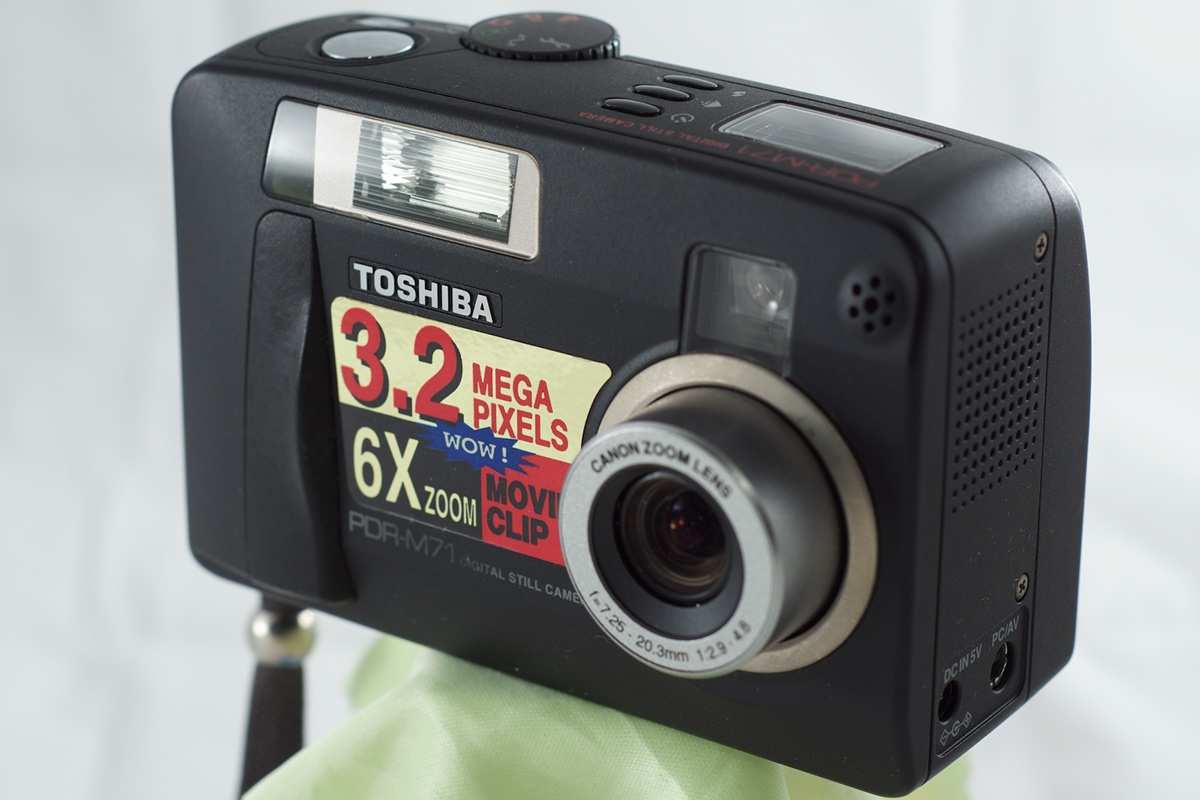My sister was the first to ask my Mom for a camera. I wanted one too, but I think it's mostly so that I would have my own turn at working these interesting devices. The gadget factor still fascinates me -- the creative factor took much longer to manifest itself. Here is a quick tour of my camera collection.

This must have been my sister's first camera -- she took it to field trips and such. I think I had forgotten about it until my Mom fished it out of storage one day. I don't remember the pictures either.

I also don't remember where she inherited this one from, nor what was taken with it. Technically it's my first camera (my name is on the side) when she moved on to a 35mm point and shoot, and then an SLR. I never even took any photos with it, but I finally had my own.
When I took it out for this shot, the vinyl on the bottom was sweating -- that's probably not good.
When I took it out for this shot, the vinyl on the bottom was sweating -- that's probably not good.

My Mom's advice was not to get into photography until I was finished school and would be able to afford film. She was probably right since someone had loaned me a camera through part of University and a rarely bought any film for it.
The digital camera market really started after I started working, so I picked up this Toshiba around 2002 since it was a cheaper alternative with the same Canon lens. It actually served me quite well for many years.

After a few visits to the auto races with the little 3X zoom, by 2007 I thought it was time to get more serious and get whatever super-zoom I could afford. It was with this camera that I took the hobby a little more seriously -- paying attention to the aperture settings and understanding what effects to expect from them. I still use this camera for its intervalometer and time-lapse videos, but in 2008 it was replaced by a Nikon DSLR.

I had always understood that stepping up to interchangeable lens cameras was more an investment in lenses -- moreso now in the world of DSLRs where there is some increment in technology every year. I ended up choosing Nikon because of their high compatibility ... just in case.

As DSLR technology keeps moving forward, I knew the best way to satiate my quest for gadgets was actually to work backwards. Old Nikon film bodies can be had for relatively cheap and are compatible with my prior investment in lenses. I re-learned how to process black and white film, although colour has recently become more cumbersome. The F80 autofocus body I picked up in 2009, the FE2 manual body in 2010.

My first venture into medium format was through the Holga in 2010. As a toy camera, it has a relatively low cost of entry, and the toy camera look was the IN thing. Much like the original cameras in this post, there isn't a whole lot you get to control. The toy TLR was a gift I received in 2013 that I had to assemble myself.

Annoyed with the lack of exposure control from the toy cameras for what is more expensive film, I went looking for a cheap yet functional alternative. For that, the low cost of entry appeared to be the old school TLR. These models built some time in the 1950s and 1970s are slightly bulky, but at least there is some control over exposure and a working viewfinder. (Yashica A - 2011, Yashica Mat - 2010)

I started to like the aesthetic of the old folding camera, so when I started looking into them, I also discovered that they come in 6x9. So, not only are these neat looking cameras, they produce a big negative. They do have some viewfinder issues, so it's back to point and guess, but exposure control is fine. One of them has light leaks that have yet to be repaired, but that adds its own sort of character. (Balda Baldalux, 2013; Agfa Ventura 69, 2012)

... But eventually I grew tired of the compromises of 1950s shutter technology. However, the problem with the medium format SLR is we're back in the trap of having to invest in lenses. I was really lucky to get a whole Bronica SQ kit with two lenses, extra backs -- the works (2013).

To overcome the challenge of grabbing pictures at concerts took me back to the Canon point-and-shoots. When the S-series was announced I was immediately taken with the front dial and the amount of controls available for this little device. Quality wise, it's about equal to my D80 but way smaller. (Canon S95, 2012)

Finally, in 2015 the long in tooth D80 got its replacement. With higher ISO and faster autofocus, the D7200 is a big leap forward. Hard Drives will be crying from the much larger image files though. (D7200, 2015; D80, 2008)
